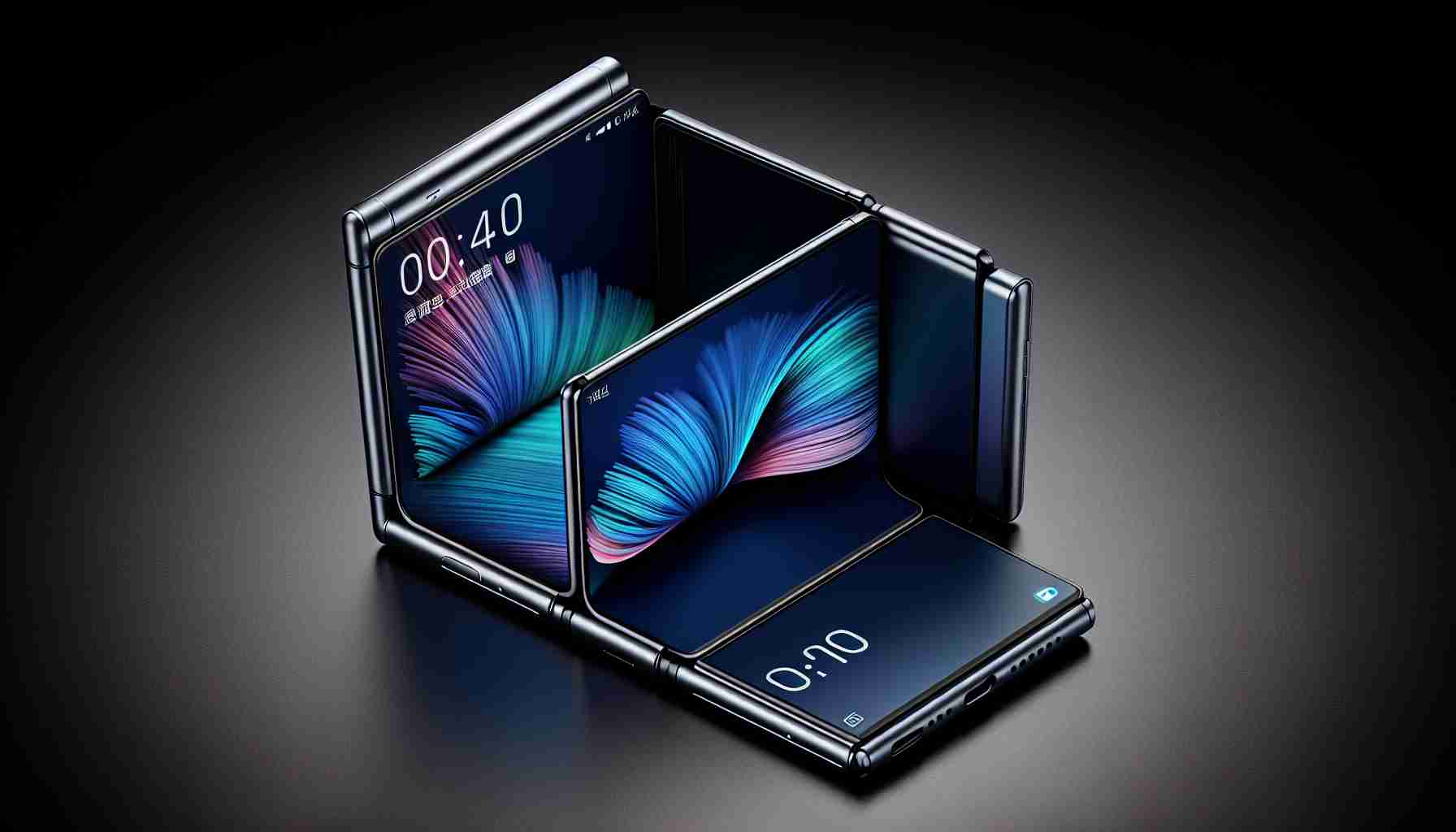A New Era of Versatility: TCL’s Triple-Fold Screen Tech
As the display innovation race continues, TCL has introduced a groundbreaking prototype smartphone equipped with a 7.85-inch screen capable of tri-fold bending, showcasing a leap beyond the dual-folding devices currently on the market. The reveal occurred at the Information Display Exhibition (SID) 2024 in San Jose, USA. The device, under the wing of TCL’s subsidiary CSOT (China Star Optoelectronics Technology), remains unnamed but has generated considerable excitement.
Advancing the flexibility of mobile devices, TCL’s state-of-the-art “Free-type” screen can fold in multiple configurations, such as ‘Z’ or ‘G’ shapes or fully extend into a tablet-like form. The company highlighted that the screen incorporates various cutting-edge technologies, including Tandem, LTPO, and PLP, to ensure high brightness, low energy consumption, and extended lifespan.
Seamless User Experience with Advanced Under-Panel Sensing
Addressing the common concern of bulkiness in foldable smartphones, this prototype measures just 0.472 mm thick when unfurled and 17 mm when folded, a remarkable achievement for early-generation triple-fold phones. TCL has also embedded new technologies like the world’s first under-display facial recognition feature, integrating a SUB (Sensor Under Panel) system that ensures 3D facial recognition even in obstructed conditions.
Despite having a lower pixel density of 420 ppi in the sensor area for seamless content display, TCL promises uncompromised security and user experience. The screen’s dynamic refresh rate can adjust from 1 to 120 Hz based on the content, although the company has not yet disclosed the display resolution or other specifications, pricing, or availability.
While industry competitors such as Huawei and Samsung are rumored to be developing their triple-fold smartphones, TCL has positioned itself as a front-runner in debuting this advanced flexible display technology.
To add relevant facts to the topic of TCL’s triple-folding display smartphone:
Evolution of Foldable Technology:
Before the advent of triple-fold displays, the market saw the introduction of single and dual-holding smartphones. Industry leaders like Samsung introduced the Galaxy Fold and Galaxy Z Fold series, which proved that consumer interest in foldable devices is strong. TCL’s leap to a triple-fold device indicates that the technology and design of foldable screens continue to evolve rapidly.
Display Technologies Explained:
The terms “LTPO” and “PLP” are significant in the context of TCL’s triple-fold smartphone. LTPO stands for Low-Temperature Polycrystalline Oxide, a display technology that allows for variable refresh rates and improved power efficiency, which is crucial for foldable devices where battery life is often a concern. PLP, or Panel-Level Packaging, is a method that can produce thinner, lighter, and more flexible displays at a lower cost than traditional manufacturing processes.
Potential Questions and Answers:
– What are the main challenges associated with triple-fold smartphones?
One of the central challenges is the durability of the hinge mechanism, which must endure repeated folding and unfolding. Moreover, the complexity of the triple-fold screen necessitates a robust, innovative design to prevent damage over time.
– What implications does this technology have for mobile app developers?
The unique form factor will require app developers to consider multiple layouts and adapt the UI/UX design to accommodate the varying screen sizes effectively.
– How does TCL’s prototype compare to existing foldable smartphones?
TCL’s triple-fold screen offers more versatility than current dual-fold devices, potentially providing a larger screen area while maintaining a compact form when folded.
Advantages and Disadvantages:
An advantage of TCL’s triple-fold design includes greater screen real estate, which can significantly enhance productivity and entertainment experiences. However, disadvantages may encompass a potentially higher cost, increased device weight, and the need for software optimization to harness the multi-form factor.
Controversies:
Controversies in the foldable smartphone market usually center around durability concerns, such as screen creasing or hinge failures, and TCL’s prototype will need to prove its resilience.
For further information on TCL, a related link to their main domain would be: TCL.
Remember, before visiting external links, make sure the URL is legitimate and relevant to the content you are seeking.
